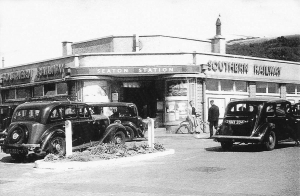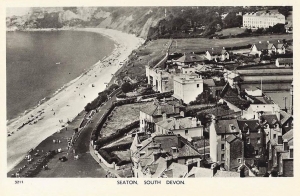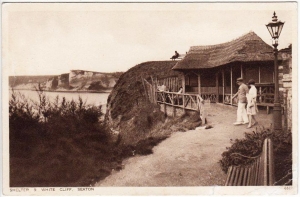Victorian Seaton
The Trevelyans are credited with turning Seaton from a fishing village into a popular Victorian seaside resort. However, this transformation is unlikely to have taken place without the arrival of the railway in 1868, when a branch line to Seaton Junction, 4 miles north of the town was added to the London South Western Railway main line running between London Waterloo and Salisbury to Exeter.
Whilst improving the town in some ways, sadly, the railway also spelt the end for one of Seaton’s other industries. Well into the 1800’s, shipbuilding and maritime commerce had continued on the River Axe and its estuary and was an important part of Seaton’s economy. The owner of Stedcombe Manor and the Ship Inn – one Mr Hallet – financed the construction of new docks on both the eastern and western banks of the river in 1806, which meant huge 100-ton ships could load and unload here, and a passenger boat ran a weekly service up and down the coast to London. The arrival of the railway in 1868 put an end to this, offering as it did a cheaper and more reliable route to the capital for both travellers and cargo. Trains transported dairy and other farm produce from the region up to London and brought visitors from the city down to Devon. It was during this period that Seaton first became a popular holiday destination and, fortunately, the tourist economy survived the demise of access via the rail network which ceased when British Rail closed Seaton Junction in March 1966. You can still travel along part of the old track bed, which now forms part of the iconic Seaton Tramway, which runs to Colyton all year round.
For many years, a ferry transported foot and horse-powered traffic across the river, but in 1877 this was put out of action by the construction of a toll bridge. This graceful structure, which decisively ended any prospect of large ships ever again sailing further up the river, is still standing and is England’s oldest surviving concrete bridge. You can only cross on foot or by bike now, with the main road running across a more modern bridge built alongside it in 1990.





